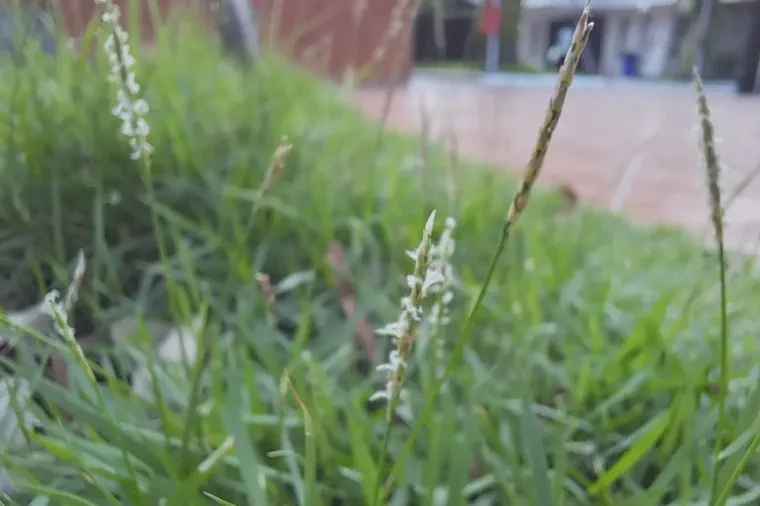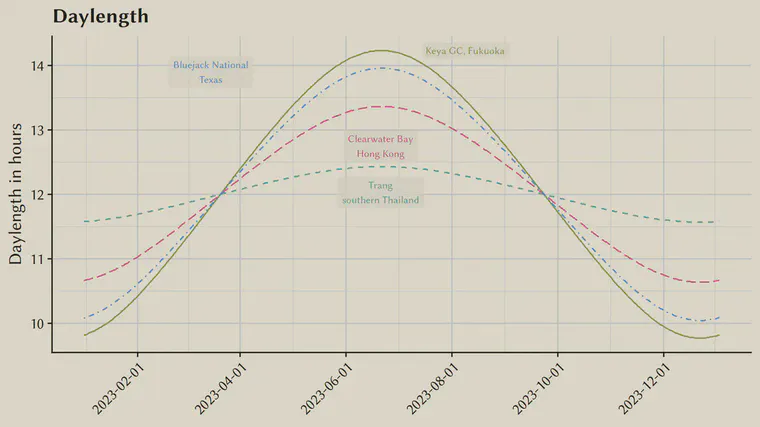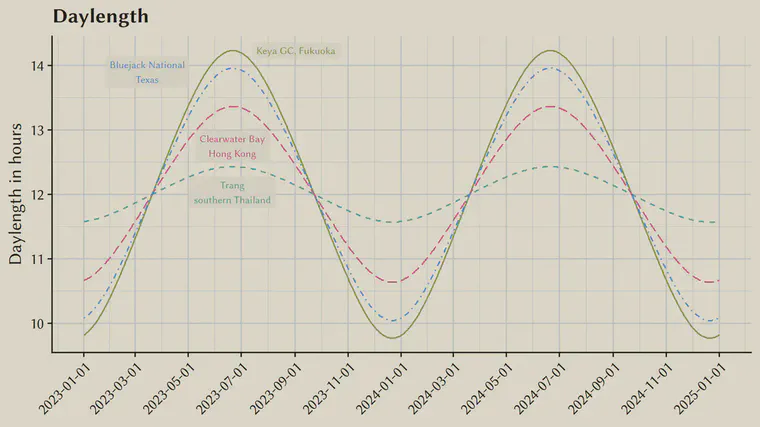Daylength, temperature, and Zoysia flowers
Zoysia grasses are grown all over the world. I’ve seen them as far away from the equator as Oregon and Yorkshire. I’ve also seen them growing near the equator. The temperatures and the daylengths vary quite a bit between the equator and those locations far from the equator.

In tropical locations, the shortest days of the year still have tropical temperatures, naturally.
As one moves away from the equator, the winters, with their short days, get colder.

Zoysia japonica and Zoysia matrella both flower during short day lengths. When the temperatures are too cold, the seedheads are not produced, because the grass is dormant. When the daylengths are long—which never happens near the equator—seedheads are not produced in abundance.

These charts look only at daylength for a few locations where Zoysia species can be and are grown. If the daylength can be combined with temperature, would that match when seedheads are observed? If you are a zoysia grower, we may end up having this discussion sometime 😉 ! In fact, we may have discussed it already.